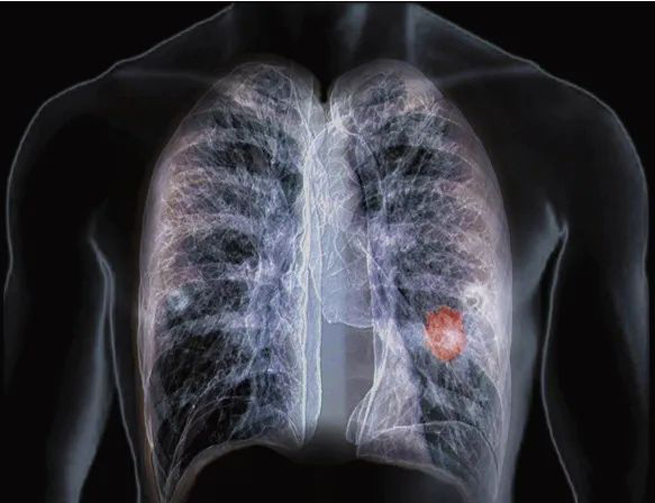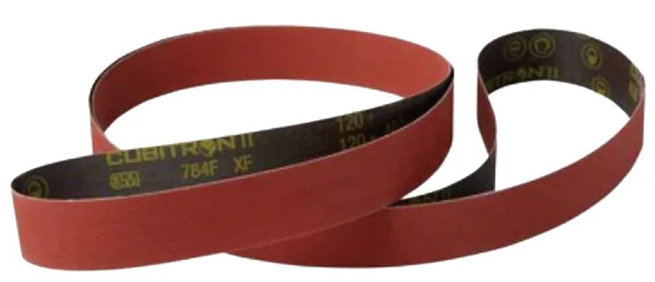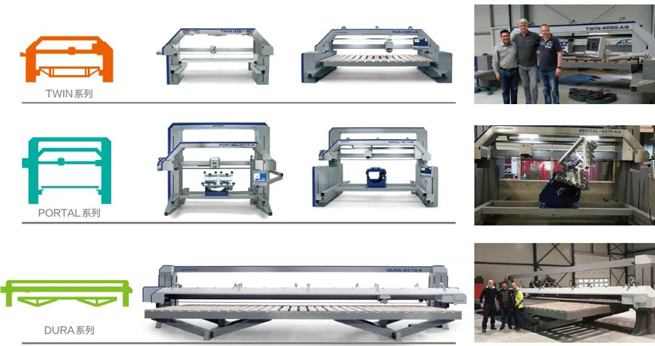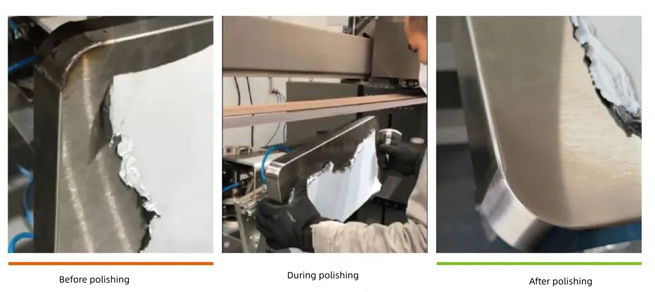Environmental hazards and occupational disease risks
According to the Law of the People's Republic of China on the Prevention and Control of Occupational Diseases, occupational diseases refer to diseases caused by workers of enterprises, public institutions, and individual economic organizations who come into contact with dust, radioactive substances, and other toxic and harmful factors during their occupational activities.
The polishing workshop in the sheet metal industry has a large amount of dust and often harsh environment, making it a high-risk area for occupational diseases. Workers are facing the threat of occupational diseases such as pneumoconiosis and emphysema, as shown in Figure 1. Once such occupational diseases occur, not only workers will suffer, but enterprises will also suffer losses, and production activities may also be affected. Therefore, effective prevention and control measures must be taken.

Difficult to control grinding quality
For workpieces with high requirements for appearance quality, manual polishing is difficult to handle, and the consistency of workpiece surface polishing is difficult to ensure; On the other hand, end users will inevitably have higher requirements for the appearance of sheet metal parts, which will force enterprises to quickly get rid of this awkward situation and seek better polishing process solutions. The stainless steel surface with poor and good appearance is shown in Figures 2 and 3.
Figure 2: Poor appearance of stainless steel surface

Figure 3: Stainless steel surface with good appearance

Constrained by 'people'
The number of skilled polishing workers is decreasing; The skill level of polishing workers varies; And the different states of each worker grinding different workpieces result in the inability to ensure the consistency of batch products, and even bring quality hazards. Meanwhile, due to the poor working environment, high workload, and significant harm to the body during work, there are fewer and fewer skilled workers willing to engage in polishing.
For sheet metal factories that excessively rely on polishing technicians, in order to avoid constraints on the long-term development of the company, it is necessary to layout in advance, optimize polishing processes, improve polishing efficiency, and minimize personnel participation as much as possible.
Application of sand belt
The use of abrasive belts and grinding wheels in technology is quite common. In recent years, the manufacturing technology of abrasive belts has made rapid progress and the application fields are becoming more and more widespread. Sandbelt is a ribbon tool made by using adhesive to bond abrasive onto flexible materials such as paper and cloth, which can be used for grinding and polishing. It is a main form of coated abrasive tools, as shown in Figure 4. The abrasive belt grinding technology has developed into an independent processing technology field with a complete range of categories and a relatively complete technical system. The advantages of abrasive belt grinding are summarized as follows:

Figure 4 Sand Belt
(1)The abrasive particles on the abrasive belt have stronger cutting ability than those on the grinding wheel, which is more than 5 times that of ordinary grinding wheel, and the grinding efficiency is very high;
⑵ The size of the sand belt can be large, suitable for efficient processing on a large area, and the range of processing materials is wide;
Due to the low heat generated by friction and good heat dissipation conditions, it can effectively reduce the deformation and burn of the workpiece;
(4) The sand belt is in flexible contact with the workpiece, and can be attached to the curved surface in reverse, grinding various complex formed surfaces, and has good running in and polishing effects.
There are various forms of belt grinding machines, as shown in Figure 5.

Figure 5 Belt Grinder
It is usually recommended that the abrasive belt grinder can be equipped with two abrasive belts at the same time to meet the needs of rough grinding and then fine grinding after one positioning of the workpiece, avoiding frequent replacement of abrasive belts and improving production efficiency.
Typical Application Cases of Belt Grinder
01 Case Welding Square Tube Weld Grinding
An example of polishing the welded square tube weld seam is shown in Figure 6.

Figure 6 Grinding of Welded Square Tube Welds
(1) Workpiece description: The thickness of the steel plate is 6mm and 10mm, and the size of the welded steel pipe is 850mm × 200mm × 100mm, with a weld width of approximately 10mm and a height of approximately 3mm.
⑵ Difficulty analysis: The welding seam is relatively high, the grinding amount is large, and the grinding flatness is difficult to control.
⑶ Equipment: DURA type double belt grinder, with a belt drive power of 15kW.
(4) Grinding method: fully automatic.
(5) Process flow: First, rough grinding with coarse sand tape to remove excess, and then fine grinding with fine sand tape to meet the surface roughness requirements.
(6)Efficiency: Complete polishing of two welds and surface on a large surface in 7 minutes.
02 Case: Aluminum alloy sheet metal parts polished before spraying
An example of polishing aluminum alloy sheet metal parts before spraying is shown in Figure 7.

Figure 7 Grinding of Aluminum Alloy Sheet Metal Parts before Spraying
⑴ Workpiece description: Made of aluminum alloy, with an oxide layer on the surface.
⑵ Difficulty analysis: After polishing, it is not only necessary to meet the surface roughness requirements, but also to ensure uniform and consistent grinding lines to avoid color differences after spraying.
⑶ Equipment: Full servo double belt grinder OGTWIN-3107-AF.
(4) Grinding method: fully automatic.
(5) Process flow: Select a suitable stacked abrasive belt, first use a 120 grit sand belt for pre grinding, and then use a 240 grit sand belt for fine grinding. During the polishing process, a servo positioner is used to link with the polishing head to achieve automatic sequential polishing of multiple surfaces.
(6)Efficiency: More than three times that of traditional manual polishing, and the processing effect far exceeds that of manual polishing. It is difficult to meet the requirements and the yield is low.
(7)Equipment: Double belt grinder OG-3107-M.
03 Case: Grinding of fillet welds
An example of fillet weld polishing is shown in Figure 8.

Figure 8 Fillet Grinding
(1) Workpiece description: Workpiece fillet welding, uneven weld seam.
(2) Difficulty analysis: The consistency of the weld seam is poor, with obvious unevenness, making it difficult to achieve automation. The traditional manual polishing method is too difficult, and the polishing effect is poor
(4) Grinding method: semi-automatic.
(5) Process flow: Utilizing the integrated positioner of the dual abrasive belt grinder for collaborative polishing, flexibly changing the position of the workpiece according to the actual requirements of local polishing, using a handheld pressure plate for polishing, observing while polishing, and utilizing the flexibility of the abrasive belt to polish and round the corner welds.
(6)Efficiency: More than three times that of traditional manual polishing, and the processing effect far exceeds that of manual polishing.
04 Case: Large Cabinet Drawing
An example of large cabinet wire drawing is shown in Figure 9.

Figure 9 Large Cabinet Drawing
⑴ Workpiece description: Pharmaceutical equipment shell, with a workpiece weight of approximately 1.2t.
(2) Difficulty analysis: The workpiece is relatively large, traditional manual polishing and wire drawing are time-consuming and laborious, and the consistency of the wire pattern is far from meeting the requirements, making it difficult to flip the workpiece.
(3) Equipment: Single abrasive belt overturning grinder PORTAL-3015-AES.
(4) Grinding method: fully automatic.
(5) Process flow: The sand belt device can be flipped ± 90 °, and combined with a rotary workbench, the workpiece can be positioned once and continuously polished on the five surfaces of the cabinet.
(6) Efficiency: 5-10 minutes/m2.
05 Case: Removal of Spot Welding Traces
An example of removing spot welding marks is shown in Figure 10.

Figure 10 Grinding off Spot Weld Traces
⑴ Workpiece description: The back of the workpiece is spot welded with reinforcing ribs, and there are obvious spot welding marks on the front.
⑵ Difficulty analysis: It is difficult to remove spot welding marks and ensure the consistency of surface wire patterns.
⑶ Equipment: Double belt grinder OG-TWIN-3107-A.
(4) Grinding method: fully automatic.
(5) Process flow: First, use a flat pressure plate to remove surface spot welding marks, then locally level, use a roller to pull snowflake silk patterns, and finally use nylon polishing sand tape to polish the surface of the workpiece.
(7) Efficiency: about 10min/m2.
Based on objective process requirements, comprehensively consider the best process route and processing equipment
When investing in polishing equipment, the first consideration is not the level of automation, but to make the process flow the most reasonable and the utilization of polishing tools or equipment the most reasonable. Suggestions are as follows:
(1) Clarify one's own demands and reasonably formulate relevant standards and specifications for the polishing effect of the enterprise;
(2) Systematically consider the polishing needs of each component and the overall effect after assembly;
(3) Pay attention to the reasonable selection of abrasives;
(4) Flexible use of sanding equipment and handheld tools. It is usually recommended to use sanding equipment for external corners, external surfaces, especially large surfaces, while suitable handheld tools are used for internal corners and internal surfaces;
For the production mode of small batch and multiple varieties, it is recommended to adopt a combination of automatic and manual methods, flexibly handle different types of workpieces, and not blindly pursue fully automated polishing.
Conclusion
With the increasingly prominent bottleneck of polishing in the sheet metal workshop, corresponding solutions are constantly emerging, and new polishing equipment, abrasives, processes, etc. will gradually replace traditional operating modes. Therefore, sheet metal production factories need to keep up with the times, change their inherent operating habits, use new technologies to continuously optimize polishing processes, and continuously improve competitiveness.